New technology and machinery’s improved efficiency are bumping up the costs of being a farmer.
In just the past generation, farming in America has changed forever — you don’t need to be in agriculture to have an inkling of that. Many things that the agriculture industry has developed and changed have been quite good, including enhanced sustainability, production efficiency, distribution, packaging, health and safety, affordability, and infrastructure, just to name a very few. Simmering below the surface, however, is the specter of an ever-growing high cost of modern farming, one that is showing almost no sign of easing up for those who grow our food or raise livestock.
With so many advancements in our food system, especially directly on the farm, you’d almost think our first-world ag system would almost be a sort of utopia. It has led to inexpensive quality food for grocery store shelves across the country, while also bringing about enhanced labor-reducing technology for farmers — what more could either side want?
Unfortunately, the true cost of modern farming, which is particularly impactful in the traditional commodity markets of row-crop and livestock production, strikes hard at the core of America’s farmland. It can create barriers for young people to enter agriculture, it can add stress to veteran growers trying to make ends meet, and it can leave little wiggle room to stay afloat during times of crisis.
Contributing $132.8 billion to U.S. gross domestic product (GDP), about 1 percent, in 2017, according to the most recent U.S. Department of Agriculture Census of Agriculture, direct-on farm employers and employees make up a mere 1.3 percent of the entire U.S. workforce. During the 1935 peak, U.S. farms numbered at about 6.8 million; in 2017 that number stood at 2.05 million.
Now, in a way this is to be expected. After all, the remaining farms are much larger than before — about 444 acres in 2017 compared with 155 acres in 1935. But bear in mind, slightly over half of all these farms are on the side of being “very small,” according to USDA, with annual gross receipts of less than $10,000. And with production costs going up and profit margins growing ever slimmer, we can expect more of these to continue to taper downward.
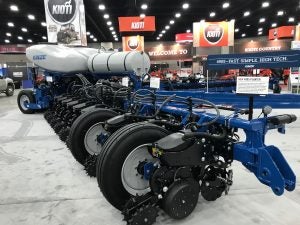
The cost of farm equipment
The explore the cost of modern farming, let’s start with the literal physical backbone (and heavy financial burden) of any agricultural operation: equipment. Regardless of size, farms require multiple pieces of heavy machinery. A casual train of thought might lead you to believe a larger farm would be better off because greater income should mean more equipment affordability. But this is simply not a given. The larger machine also means the higher upfront cost to purchase. Let’s not forget specialty crops that require very specialized equipment, which can be difficult to come across in the used marketplace.
Prices are fairly fluid dependent on region, but it is safe to say your typical average-size John Deere or Case IH combine starts in the neighborhood of $300,000. That is the base price for something brand new without any optional add-ons. Some of the larger tractors in this industry can hit $700,000 or more, plus, with all of the proprietary software in these machines, farmers aren’t able to do many repairs themselves (known as right-to-repair), helping to add to costs. There is also the secondhand machinery market, fully utilized by many farmers. But even here you can expect to pay no less than $100,000 for even a decent combine.
Now, what about the more basic stuff? Take a look at your average utility tractor, something non-articulated to just satisfy everyday loading, moving, and trailering needs. Again, as a base price, you can go to your local dealer and expect to pay well within the bounds of $20,000 to $50,000 for something mid-sized, in the 25 to 80 horsepower range. Used these machines still run $10,000 to $30,000. As you can imagine, the price tag goes up significantly based on greater horsepower and add-ons.
If you plant row crops (like corn or soybeans), there are a variety of implements you need. One of Kinze’s 4705 24-row no-till planters will cost you at least $310,000, for example, while a John Deere corn head for that combine you already paid hundreds of thousands of dollars for will add another $55,000 to $100,000 to the cost. Of course, when you rotate soybeans or wheat in your fields, you’ll need harvesting implements for them, too. Don’t forget tillage equipment, sprayers, hay raking and baling equipment, and augers, all of which may be necessary to conduct business.
The ever-increasing prices of equipment, in part due to ever-increasing technological advancements, almost seem more suited as luxuries than essential pieces of work equipment. Even a standard new skid loader (and like a tractor, irreplaceable on many farms) can easily cost you $25,000 to $65,000. Or if you need a side-by-side utility vehicle for hauling feed or doing other odd jobs around the farm, expect to drop more than $20,000 on a Can-Am Defender Pro or roughly $10,000 for a Kubota RTV series. It’s no wonder many farmers opt to run their compact pickup trucks into the ground for these kinds of tasks — it cuts costs.
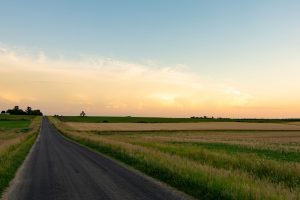
The cost of arable land
Arable land, the most fundamental agrarian natural resource, seems to be increasing in value while decreasing in availability. In 2016, tillable acreage in the U.S. made up only 16.65 percent of landmass. This isn’t surprising when we consider that from 1962 to 2012 we lost 31 million acres of farmland to some sort of development. Loss of farmland isn’t the hot-button issue it was in the ag community about a decade or so ago, but the sobering reality still impacts us.
Cost per acre fluctuates greatly by state and region. But in some of our prime farm country, affordability is virtually impossible for just anyone without an inheritance to waltz into the industry and acquire enough acreage to get into cost-of-living-sustainable production ag.
In California, one of America’s ag powerhouses, the average cost of farmland is $10,000 per acre. Iowa isn’t too far behind at $7,190 an acre or even Florida (which is home to more ag business than you may think) at $5,950 an acre. When you consider than many production farmers say (https://www.agriculture.com/farm-management/business-planning/how-much-does-it-take-to-become-a-farmer) they need at least 500 owned acres and hundreds more leased acres to actually make a living solely on the farm, the sum of the money spent can be staggering.
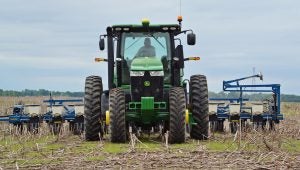
The cost of crop farming
With the unfriendly cost of entry, so to speak, it may lead you to wonder about the generational farmers fortunate enough to inherit land, equity, and even equipment. If you have the foundation set, it should be easy to make an honest living in this business, no? Unfortunately, even this case isn’t so simplistic.
Your annual costs of operation vary greatly according to season, commodity, and region. But in general, costs are going up, and market values just can’t keep up sufficiently.
Profitability per acre of any crop is difficult to accurately depict in a blanket statement. It will vary greatly by the needs of a particular soil, weather, bushels per acre, labor, time of marketing, and much more. But for some perspective, let’s look at the 2018 Illinois reports for corn and soybeans cost of production. Corn averaged $854 cost of production across all of the state’s various regions, and it ranged anywhere from $3.70 to $4.33 a bushel when sold. Being conservative for with the national 176.4 bushels per acre yield average in 2018, that means each acre brought in only about $653 to $764.
Illinois soybeans averaged $639 cost of production per acre, for a value of $8.99 to $10.64 per bushel. That year the average was 51.6 bushels an acre, with a potential income of $464 to $549 an acre.
Other crops aren’t much more cheerful looking. Looking at historical commodity costs and returns per the USDA, national wheat production had a -$71.42 value of production, less total costs.
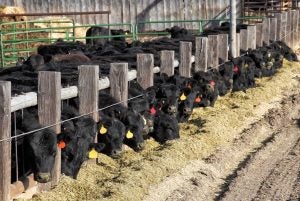
The cost of livestock production
Other commodities, such as livestock and poultry, haven’t fared much better. According to the USDA in 2019, the dollars per hundredweight gain value of hog production, less total costs was -$5.62. Less operating costs, that value would be a whopping profit of $11.10 . Note the reason in difference between these two numbers is that operating costs, present in the first dollar amount, account for the most expensive parts of all animal production. To calculate this unit, the USDA took into account things like purchased feed, on-farm grown/harvested feed, animal purchase, bedding, veterinary care, repairs, marketing and so forth.
Dollars per cow in the cow-calf segment of the beef industry that same year were a net value of -$786.87, less total costs. Even without operating costs, that leaves another slim profit margin of $49.65.
A benefit (or not so much of a benefit depending on whom you ask) to commodity poultry and pork are the wide availability of contracts with corporations such as Tyson, Cargill, and Smithfield. Granted, this does provide the safety net of a guaranteed buyer, but it doesn’t necessarily mean significantly better finances or lower startup costs. For example, the USDA said 60 percent of contract broiler growers earned household incomes that exceeded the U.S.-wide median, with a pretty wide range in annual salaries. However, this report noted: “On average, off-farm income accounts for half of the total household income earned by contract growers, and off-farm income varies widely.”
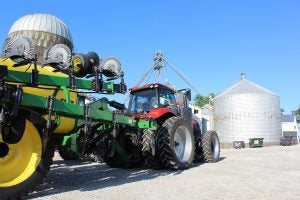
The reliance on off-farm income
This brings us to another important reality — the majority of farmers are reliant on an off-farm income of some sort to help pay the bills. This isn’t new — in fact I’d say most people in ag know this very well, if not statistically than in practicality. Think about it, how many farmers does anyone know running an operation as the sole source of income for them, their spouse, and perhaps the children? Chances are very, very few, if any.
According to the USDA, while it appears median income is expected to rise for farm households, it’s important to be aware off-farm income is directly related to this.
What “off-farm income” looks like varies quite a bit. It could take the form of a spouse with a full- or part-time job, it could be both spouses working full- or part-time in addition to farming, or even an affiliated parent or adult child working off the farm in some capacity. But the root cause tends to be the same — the farm just doesn’t pay for itself (or perhaps it can pay for itself but not the line of interest, the equipment loans, or health insurance).
We’ve seen how the cost of production has continued to rise and the return on investment of the major commodities has simply been unable to keep up, severely regressing in some years.
In 2017, the USDA released a nice “Food Dollar Series,” which showed exactly how America’s food dollars broke down and where each sent went after purchasing a processed and packaged food product.
The biggest chunk of change went to the food services sector getting 36.7 cents, followed by food processing getting 15 cents, and the wholesale trade with 9.1 cents. Farm production sat at fourth getting just 7.8 cents of every dollar spent. Now, in a food system so heavily reliant on widespread distribution and processing, a shift in how the dollar is cut up is reasonable — after all you can’t just go to the farm down the road and purchase a bundle of wheat and go through all the intricate steps to get a handful of bread flour. But when this number is visualized so plainly, coupled by the ways in which farmers have been struggling for decades, something doesn’t bode well with a lot of people.
There isn’t any one solution from any one organization, sector, or group to answer to the many financial issues farmers face in the modern era. But it seems to stand that commodity farming as we know it won’t get incredibly easier any time soon. What we can do is support our farmers, local and maybe not so local, and recognize the contributions they make to our food supply system. Pay attention to your local Farm Bureau and see what issues and concerns they are raising for farmers in your areas and show your support if you can. We all need to eat, and we all can’t have answers, but we can work for the future of agriculture and try to make it the best we can.
Jaclyn Krymowski is a graduate of The Ohio State University with a major in animal industries and minor in agriculture communications. She is an enthusiastic agvocate, professional freelance writer, and blogs at the-herdbook.com.



